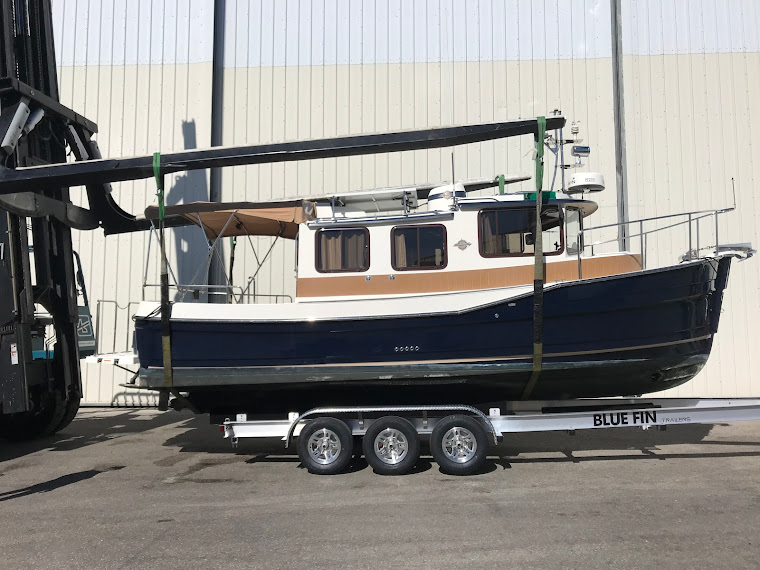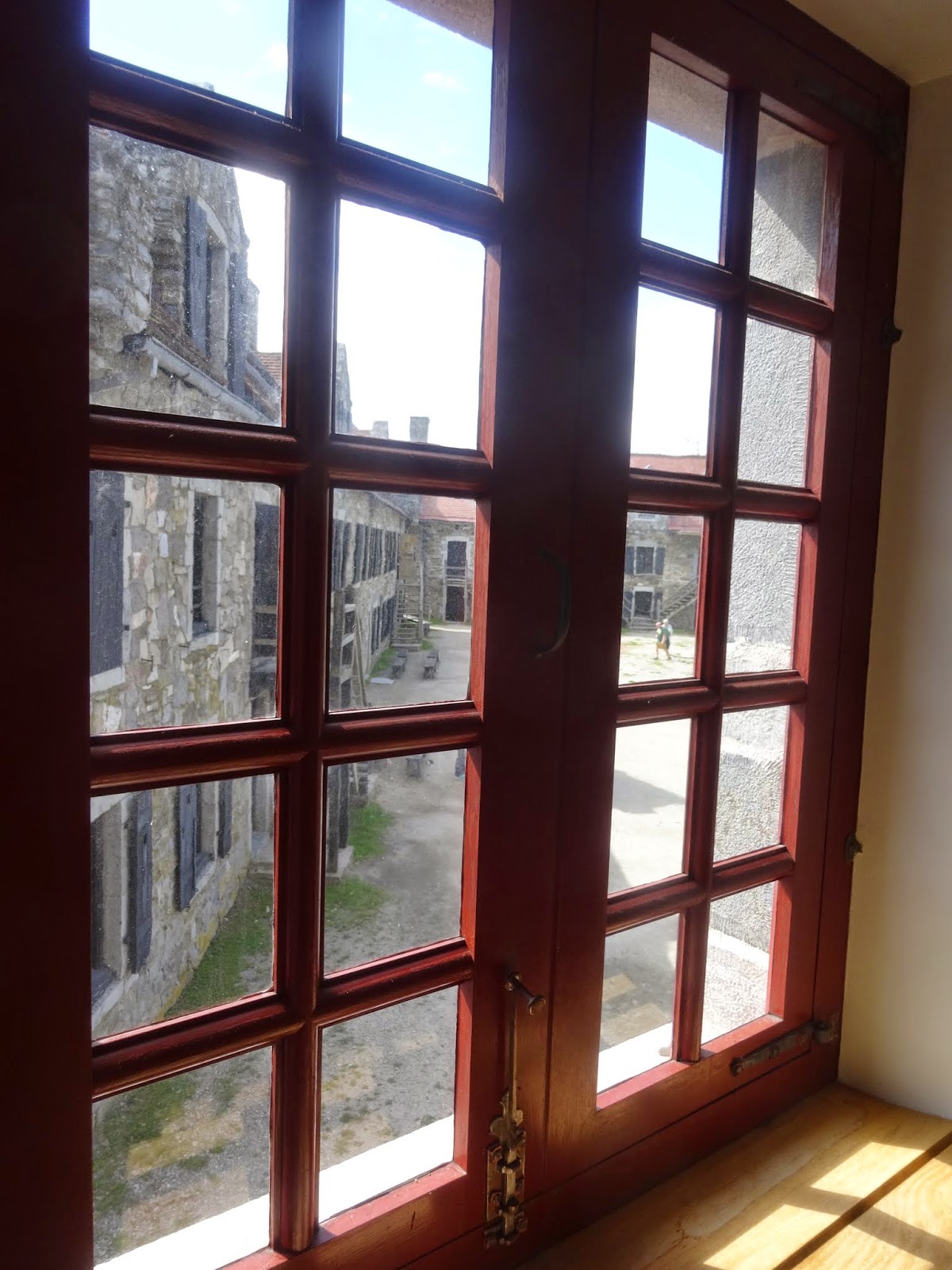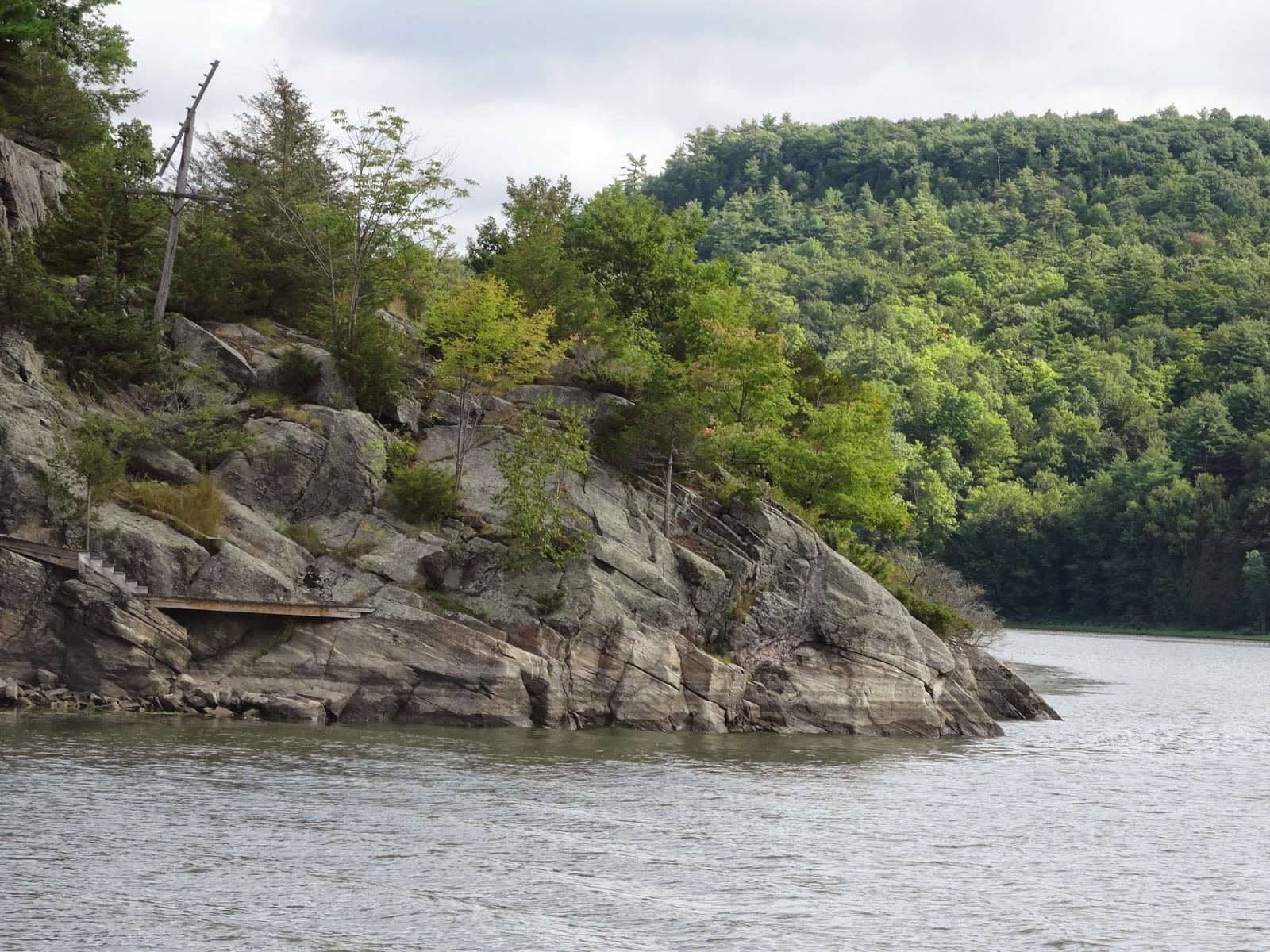Forts
and the Birth Place of the Navy
After
leaving Vergennes we stopped for a bike ride to the Champlain Maritime Museum.
This required a dink ride – almost to the beach, toting the bikes onto shore,
up the hill and a couple miles around to the museum. But, it was well worth the effort and justified
all the good food we enjoyed in Vergennes.
This museum hosts a replica of the Philadelphia – one of the ships
Benedict Arnold used to attack the British at Valcour Island. This battle was lost by the US, but Arnold
did enough damage to prevent the British from controlling the south end of the
lake and bought the young country time to build a serious counter attack.
We
sailed under Crown Point with its fort ruins and on to visit Fort Ticonderoga
again using the dink to get to shore, happily, with minimal wadding. The original fort on
this strategic point was built by the French and it saw action during the
French and Indian war and again during our war with the British. Benedict
Arnold prepared his fleet here and retreated to the safety of this fort when he
escaped their attack. But after the peace the fort was no longer needed since forts
further north were manned instead. The Pell family who had bought the property
in 1820 began a restoration in the early 20th Century. Much of the
stone used to construct the fort had been used by local villagers to build
homes so not much remained when the reconstruction began. Our tour included a collection of armaments,
maps and uniforms. We also visited the Pell family summer home and the
extensive King’s Garden created by Sara Pell.
Our
next stop was Whitehall, NY – which claims to be the birthplace of the US
Navy. The boats that Benedict Arnold
used in the battle of Valcour were built in Whitehall and towed up to Fort Ti
to be outfitted, armed and manned. Our
tour guide informed us since there had never been a navy, the sailors were
randomly recruited (conscripted) from the ranks and rapidly “trained”. This green crew may also have contributed to
the mixed outcome at Valcour, but then it makes the level of success even more
remarkable.
In Whitehall we also enjoyed a visit from good
friends Arch and Susan who drove up to spend the weekend with us. Of course, Steve and Arch had a “project” on
the boat while Susan and I toured the surrounding antique shops and garage
sales. The local Green Mountain Market
supplied live lobster for our dinner!
Thanks to Arch and Susan for bringing the soil from Morris to re-pot my herbs! Shauna, notice they are all still doing well now safely back in the USA
Before
leaving Whitehall, Steve and I had also lunch at the beautifully restored
Victorian Gothic mansion on the hill, Skene Manor, followed by a quick visit to
the local history museum – conveniently located on the canal wall. Amazing the unique items are hidden in these
little museums – the vacuum cleaner caught our eye as well as a collection of
foot heaters – useful in the cold winter weather in those buggies.
Our
next fort was Ann a few miles below Whitehall.
Nothing of the fort remains but the name; however, the town did sport a
bank housed in a block house and two very quirky antique stores complete with
quirky owners.
This
crossroads also boasted a Cumberland Farms “convenience” store. Since I usually seek out farmer’s markets or “big”
grocery, I am always surprised by the range of products in these shops as well
as the many Stewart's we have seen up here.
They supply everything from basic cleaning supplies to an array of
frozen food and fresh dairy products.
There are even some fresh produce items.
Of course they make most of their sales with the bounty of beer and wine
or donuts and coffee, but it is nice to know that essentials are handy at
nearly every stop.
Fort
Edward ended our run of forts. Again all
the forts that occupied this strategic spot on the Hudson River are long rotted
away although our museum guide informed us that the Fort House was indeed
constructed with remnants of one of the old forts. Before the canal created a
continuous waterway between the Hudson and Lake Champlain, the area around Fort
Edward was a traditional carrying place for the portage from the Hudson River
to Lake George. (Then from the north shore of Lake George at present day Fort
Ticonderoga to Lake Champlain) So
traditional is this location that artifacts dating back more than 6000 years
speak to the history of the area. It is no surprise that this was a critical
point in the French and Indian War and again in during the Revolutionary
War. As we wandered the museum in the
Fort House, our guide reminded us that we were walking where George Washington
among other luminaries trod.
However,
other crucial events in the war are linked to this small upstate New York
town. The story of Jane McCrea – a young
women purportedly killed by the Indians allied with the British – aroused the
ire of Americans and bolstered their resolve to defeat the enemy. Jane was murdered and is buried in Fort
Edwards although many aspects of the story remain more myth than fact. Nevertheless her story also inspired James Fennimore
Cooper’s classic tale “The Last of the Mohicans.” The literary links here also
include Solomon Northrup whose story “Twelve Years a Slave” was recently made
into a movie. Solomon actually resided in
the Fort House for several years and was lured away and captured from his family
while living in Fort Edward and was eventually retrieved by another local man.
All
of this history came with a charming vintage town, restaurants in historic
buildings, and a towpath park built along the old Champlain canal. Oh yes, the
town provides a free wall with power in the heart of the old town!




































































































No comments:
Post a Comment